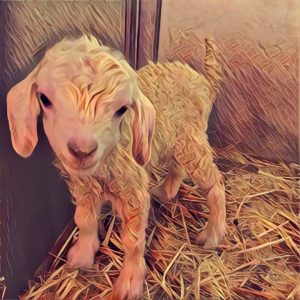What To Expect When You’re Expecting… A Baby Goat | What To Know For A Baby Goat’s First Few Hours
This past spring we had our first kid born, and needless to say, we were a little concerned about how it would go. One of the good and bad things about being in some forums and Facebook Groups related to agriculture and our Angora Goats specifically, meant that we were hearing stories of people having to help the mama out with the birthing process. Thankfully, Momma G did great and had the kid all on her own, but once Baby G (as we affectionately called her while she was little…now Sophie) arrived, we quickly realized that we didn’t know what to do next!
We wanted to make sure a few things went okay post-birth, but we weren’t sure. So, learn from our experience here and be prepared before your “first time” comes around.
-
- Mom and baby need to bond. We were not prepared and should have probably had them separated in a kidding stall, but since we didn’t, we wanted to make sure that Momma G and Sophie bonded. You’ll notice in the video that Momma started talking to the baby right away, even before Sophie stood up. After the initial excitement, we quickly moved our other two goats over to another stall so that Momma G and Sophie could do their thing.
- Mom should clean off baby. Assuming the mom doesn’t reject the baby, she’ll do most of the work (yuck!) to clean off the baby. Since we didn’t know how this would all go do
 wn, we had some towels handy and had read up that dog potty pads for house training were good to have around to help soak up the fun stuff.
wn, we had some towels handy and had read up that dog potty pads for house training were good to have around to help soak up the fun stuff.
All-Absorb Training Pads 100-count, 22-inch By 23-inch.
- Mom should expel the after-birth. We purchased our first three goats from a guy who has tons of alpacas and tons of goats and he told us that he’s never seen a goat being born. We got lucky and happened to see Sophie come out. Not only that, we came back to check on them after about 60 minutes from birth and happened to see Momma expel her afterbirth. Fun stuff, but all in all, glad we saw these things happen firsthand, especially to know they happened.
- Nursing! The big question we had was how soon should the kid start nursing and at what point should we worry. Fortunately, we were able to witness Sophie nurse just shy of the two hour mark our vet had given us as a rough guide. The hovering farmer I am was looking for proof that Sophie was nursing for the first day or so, mainly because we were headed out of town and I didn’t want to leave if we had to worry about bottle feeding.
- Bonding. Again with the bonding concept. Once we knew Momma G and Sophie were more settled, we actually moved them to a stall that got less wind and had a heat lamp for the baby. April can be iffy in Colorado, so we wanted to make sure that they had the necessary creature comforts. We kept the goats separated for the first week or two to make sure that mom and baby were in a good rhythm and bonded well. Since our two others are a doe and a wether, we weren’t worried much about introducing them all.
Seeing a baby goat take its first steps and make its first cries for mom was a really fun experience. We’re thankful that we didn’t have to intervene and help much. AND we’re thankful we didn’t have one of our spring blizzards that Colorado is known for on the day she was born!
